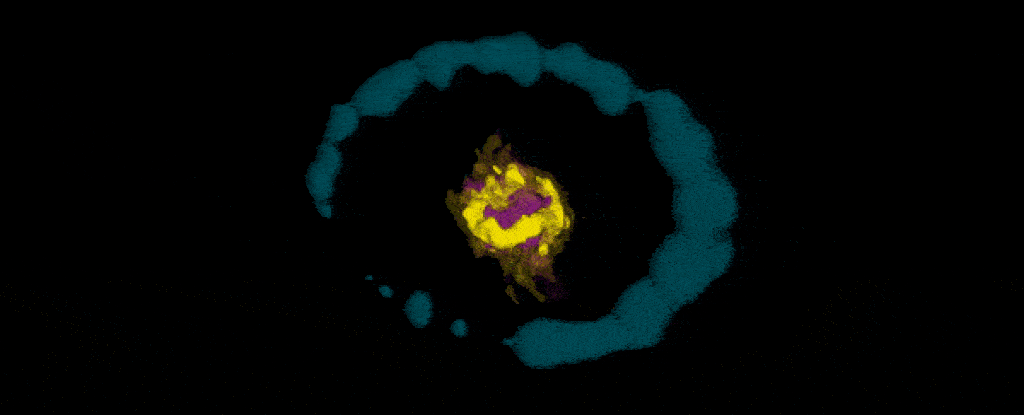A little over three decades ago, astronomers witnessed a rare and incredibly violent cosmic event: a dying star exploding some 168,000 light years away, blazing with the intensity of 100 million Suns.
This stellar eruption – dubbed supernova 1987A – was so bright that it was the first supernova observable by the naked eye in almost 400 years. And now, for the first time, scientists have probed deep into the heart of this exploding star and detected the molecular beginnings of new cosmic bodies forming within it.
Using the Atacama Large Millimetre/submillimetre Array (ALMA) in Chile, researchers were able to analyse and map in 3D the structure of new molecules taking shape in the supernova's aftermath, and discovered the presence of new chemical elements that hadn't previously been detected within it.
"When this supernova exploded, now more than 30 years ago, astronomers knew much less about the way these events reshape interstellar space and how the hot, glowing debris from an exploded star eventually cools and produces new molecules," says astronomer Rémy Indebetouw from the University of Virginia.
"Thanks to ALMA we can finally see cold 'star dust' as it forms, revealing important insights into the original star itself and the way supernovas create the basic building blocks of planets."
While supernovas may be more commonly known for their destructive capabilities – given that they signal the death of stars and can endanger anything in the space surrounding them – they also produce the chemical reactions that give birth to cosmic dust, which can go on to form the underpinnings of new stars and planets.
Indebetouw's team used ALMA to observe SN 1987A's core at millimeter wavelengths – in between infrared and radio light – giving an unprecedented glimpse inside the heart of the exploding star.
With the results, they were able to map the supernova's structure in 3D, revealing the location and abundance of newly formed molecules inside it, including silicon monoxide (SiO) and carbon monoxide (CO).
We've never had this kind of insight into SN 1987A's core before, but the team didn't stop there.
In a separate study, the researchers describe how ALMA revealed the presence of other previously undetected molecular formations inside the supernova, including formyl cation (HCO+) and sulphur monoxide (SO).
 Artist's impression. Credit: A. Angelich; NRAO/AUI/NSF
Artist's impression. Credit: A. Angelich; NRAO/AUI/NSF
"These molecules had never been detected in a young supernova remnant before," says Indebetouw.
"HCO+ is especially interesting because its formation requires particularly vigorous mixing during the explosion."
According to the researchers, the revelations about these new molecules mean other undetected formations could also be present in the core – and could shake up our understanding of how molecules and cosmic dust are born inside these violent events.
"This is the first time that we've found these species of molecules within supernovae," explains one of the team, Mikako Matsuura from Cardiff University in the UK, "which questions our long held assumptions that these explosions destroy all molecules and dust that are present within a star."
The findings are reported in The Astrophysical Journal Letters and the Monthly Notices of the Royal Astronomical Society.
